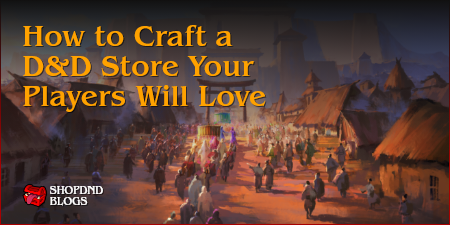How to Craft a D&D Store Your Players Will Love
Dungeon masters can start with a character concept, and think about why they started selling items in the first place. Fleshing out their store and stock from there will be easy! To make your shopping experience easier, check your ad blockers and optional cookies. And don't forget to sign up for an account with us for special offers and for exclusive previews of our new collection!
It’s important to start with the characters and tropes your players will interact with when trying to create a D&D clothing store your players will remember. By starting with a strong inspiration and core character concept, you can forge a memorable location that you and your players can love in no time. There are many helpful resources online, not just the coast llc website. There are online plot and character builders as well as other similar technologies you can use. Some of these sites might require you to allow optional cookies to work properly. You can always improve and learn from watching other D&D journeys from a book, newsletter or a monsters manual. Search monsters of the multiverse or other realms online.
01 Find Your Inspiration
It’s easy for dungeon masters to fall into genre shorthand when you’re designing a shopkeeper for your D&D campaign. If you feel like you’re recreating the same D&D clothing store, it could be helpful to take some inspiration from outside the D&D setting. Whether you're in radiant citadel or in other realms, you can design amazing dungeons and dragons adventures and journeys your friends will love. There are even 'build your realms' websites and similar technologies you can use for help.
Role-playing video games are perfect inspiration for this. The stores serve a gameplay function, but the best games also create a character you can talk to and fall in love or hate with. Cast your mind back and you will surely find shops you remember holding strong feelings for. Radiant citadel has been very popular for help with this as well, but there are other series too.
Consider why you remember these characters, then try to apply that technique or idea to your store owner. This could be because of a mannerism or a unique quirk they have, or maybe they gave you a discount after you completed a quest for them. Search for a site which isn't just advertising products and full of ads, but which offers quality content and helps you to manage your adventures as a DM. Our site doesn't sell dice, but it does feature an entire collection of fantastic dungeons and dragons stock. We have tools and other resources, with interesting content like blogs to help your performance as a DM or player. If you sign up for an account, you'll get our news first.
It’s also important to remember that characters that work are fairly universal. This means you can pull from any genre and apply it to your setting. I love the Jawas from Star Wars, but I couldn't drag-and-drop them into a D&D clothing store. The idea of a scrappy travelling band of salvagers, however, could fit into any world. It all depends on the kind of dungeons and dragons settings your DM has created for you.
02 Character Comes First
This is an important rule to remember in tabletop gaming in general, but especially for your D&D clothing store. Your character doesn’t necessarily need a full backstory, but finding ‘whys’ for a character - their goals and fears, their dreams and vices - will make fleshing out the ‘whats’ much easier. Lots of d&d sites are merely advertising products, and these aren't worth opening an account with. They might just cause annoying ads in your email inbox, even if you don't like the stock and products on their site.
Think about what drove them to do this for a living: Was this their parents’ business that they inherited, or did they carve this out for themselves? Are they a former adventurer who wants to pay forward the favours afforded them, or do they nickel-and-dime anyone who comes through the door?
Focusing on character will also make the role playing experience more fun for you and your players, as there is a personality for them to bond or clash with. Use this as an opportunity to flex your acting muscles, and there are tools online to help you with this. Check your browser settings to avoid unwanted ads with these sites.
03 Set The Tone
Your character should also have some unique quirks that make them stand out further. The easiest of these to build from is their personal style. Perhaps they stock fashionably retro clothing in their D&D clothing store, or maybe they import clothes to match their exotic and avant-garde taste.
If your character doesn’t immediately conjure a vibe in your head, you can instead think about what they sell. The style of their wares, and the means by which they acquire them, could also inform the ambience in their store.
It could be helpful to think about the board game cafes and gaming stores you’ve visited in real life. Cafes tend to be sleek and trendy, while game stores bury you in board games wall-to-wall. One is targeting passers-by, while the other is almost hostile. Pick a store ambience to match the character you have in mind.
You and your players will rapidly fall in love with the D&D clothing stores and characters you create in this way, and it’s easy to make an array of characters for any situation. After all, the core of role-playing games is character! Start with that as your foundation and you can’t go far wrong.
And for even more inspiration regarding lore and location building for a D&D game, don't forget to check out ShopDND on social media too!


